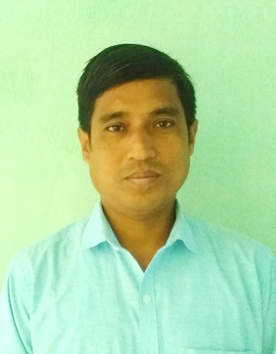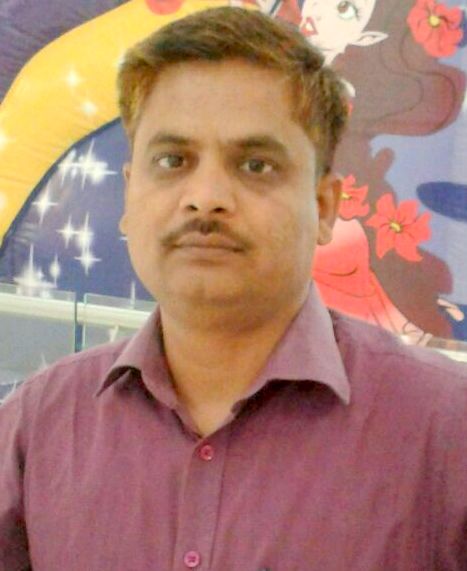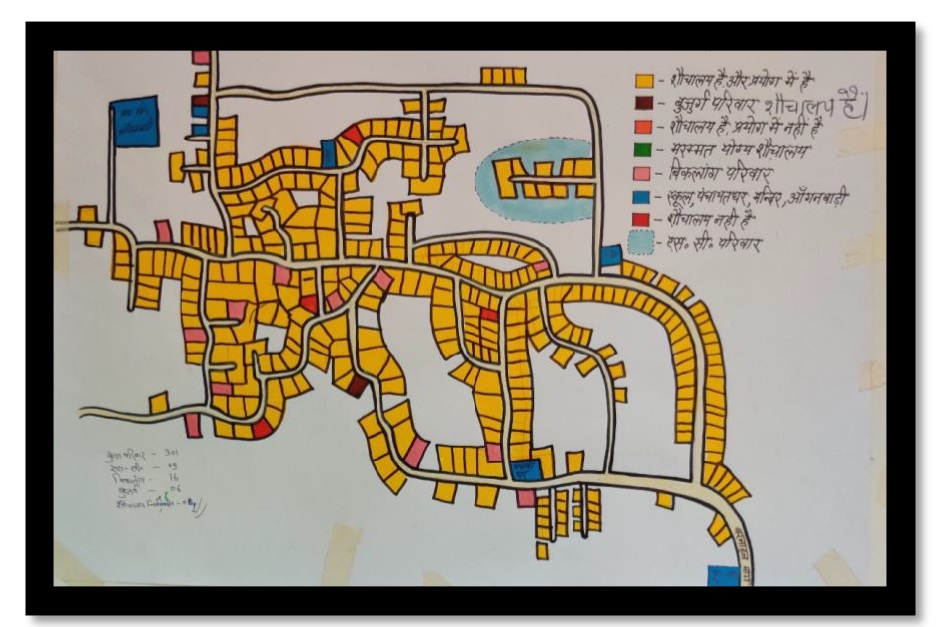Last year WSSCC’s India Support Unit piloted a new participatory approach called Community Leave No One Behind. The pilot took place in 5 districts in India (Mirzapur in Uttar Pradesh, Ranchi in Jharkhand, Kamrup in Assam, 24 South Paragnas in West Bengal and Purnea in Bihar). A prerakh (facilitator) was appointed in each District to support this process and work within villages at community level. The Sanitation Learning Hub supported an accompanying learning component of the pilot, facilitating learning sessions between the prerakhs and the development of a handbook on Community Leave No One Behind based on the experience.
From the start of Total Sanitation Campaign (TSC) to achieve ODF status (Swachh Bharat Mission Gramin 2014-19, PHASE-I) it has been a long journey to accelerate use of toilets throughout the country, but until now we have not been able to reach to all parts of society. During SBM-G, PHASE-I, unfortunately we again saw many people left out from the baseline survey.
Community-Leave No One Behind (CLNOB) is a new participatory approach to identify both challenges and solutions in communities’ journeys towards ODF-Sustainability. It has been designed to be integrated into Phase II of the Swachh Bharat Mission-Grameen (SBM-G). The Government of India has issued the guidelines for Phase II of SBM-G which includes ensuring that no one is left behind as one of the guiding principles. CLNOB seeks to demonstrate a way to do it. It encourages communities to identify gaps in sanitation coverage and use and promote actions they can take themselves.
A total of 200 villages were mapped as part of this pilot. This blog puts together our reflections of the mapping and follow up processes within Community Leave No One Behind and our experiences within villages.
CLNOB Pilot (June- October, 2020):
No. of Mapping Exercises, Revenue Villages Covered and No. of GPs
| S. N. | District | No. of habitations where mapping conducted | No. of Revenue villages/ Sansads* covered | No. of GPs to which these habitations belong to |
| 1 | Kamrup Rural | 15 | 5 | 2 |
| 2 | Mirzapur | 26 | 22 | 14 |
| 3 | Purnea | 30 | 13 | 4 |
| 4 | Ranchi | 20 | 20 | 11 |
| 5 | South 24 Parganas | 29 | 6 +1 (partially) | 2 |
| Total | 120 | 66 Fully + 1 Partially | 33 | |
Note: *Sansads are there in South 24 Parganas only.
The potential of Community Leave No One Behind
The objective of CLNOB is to get a better understanding of the sanitation status on the ground, check no one was left behind and ensure long-term sustainability of India’s Open Defecation Free status, as declared on 2nd October 2019.
CLNOB is an adaptable participatory process in which communities (tolas, paras, majra, purwa, habitations etc.) are convened and facilitated to conduct their own analysis of who was not reached in Phase I and those that require retrofitting of both superstructures and sub-structures to ensure toilets are accessible to use by all and safe. When we facilitate CLNOB mapping exercises, community members show all households falling into different categories, including households without toilets.
Subcategories of identified included scheduled castes/scheduled tribes, persons with disabilities, landless with homestead, small farmers, marginal farmer and woman-headed households. The process provides clear information, identifying those left out or have special needs (persons with disabilities, elderly people, pregnant women and more) and which toilets need retrofitting. And then encourages community members to take their own action to ensure where possible. GP/Block/District staff are then appraised of the status and progress at community level. This helps in action planning as these are priority categories and subcategories for coverage under SBM-G Phase II. In this way it helps sustain ODF outcomes.
In SBM PHASE-II CLNOB can help through identifying:
- households that have been left out
- toilets that need to be retrofitted (for long-term functionality and usability as well as ensuring better faecal sludge management)
- which toilets that need to be modified for making them user-friendly for persons with disabilities and others
- and households where continued usage of toilets is an issue.
These types of exercises were not undertaken in SBM Phase 1. Our intensive mapping process for example found that in 4 Panchayats (village administrative unit) of one block in Purnea district, approximately 69% of households have no toilets. Communities from certain castes and tribes and the Muslim minority still did not have access to toilet facilities.
The progress of Left Out of Baseline (LOB) and No One Left Behind (NOLB) construction is very slow. While toilet construction under LOB & NOLB is in supply mode, CLNOB promotes demand driven and self-construction mode. Robust outreach work in individual families and remote rural set up is provisioned in the approach.
What comes next?
The CLNOB approach has proved helpful to promote ODF sustainability under the flagship programme Swachh Bharat Mission Gramin (Clean India Movement). As it encourages self-construction by beneficiaries, it provides opportunity to internalise sanitation practices in the long term. CLNOB has the potential to ensure safe sanitation practices and enhance sanitation and hygiene access and coverage.
The Covid-19 pandemic did however challenge this process. District administrations were initially unwilling provide permits to allow this mapping process. It was often challenging to main physical distancing while people were gathered even with frequent instructions. However, we also soon had some heartening reflections. As CLNOB uses affirmative methods for positive motivation and uses do no harm and gandhian principles to sustain and continue toilet access and use, it has great potential.
While initially we found that the conversation was around toilet provision to all, CLNOB has helped change this conversation to one about access and use for all. CLNOB encourages us to take the time to explain the various options to people and enable them to take their own decisions. This leads to people being more motivated to make changes themselves.
So far these changes are in their infancy stage in the districts. The report of our CLNOB pilot with details of all those who have alternative toilet needs has been shared to Mukhiya (village heads), block and district-level officials in all 5 of the pilot areas.
In Purnea district, a Panchayat-level action plan has been proposed by the district level administration. In another case in 24 South Paragnas when the Gram Panchayat (GP) witnessed these gaps being addressed, and met, they were willing to make plans to continue this exercise. In Kamrup, the information revealed from CLNOB mapping and data validation was given to GP President, Assistant Executive Engineer, the District consultant (SBM-G) and the Executive Engineer. The GP President of Chamaria village stated that he will ensure that the gaps in ODF are addressed soon, and the Executive Engineer stated that it will help him in action planning.
This information will help the GP and districts to better plan their action under SBM-G. Most importantly, CLNOB promotes community participation and spirit of self-help in identifying and addressing gaps in ODF status and ensuring its long-term sustainability for all.








